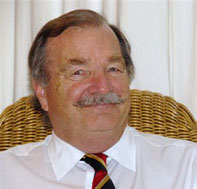Maybe we are getting older. The Tour de Farce team I mean. We who took part in this month’s Tour de Farce VIII expedition in France are all over 40 y’know. Yes, all right, over 50. OK, over 60…
But once again, we did it: 1000 km across France. Well, OK, let’s say 800. Mind you, it might have been only 700. Certainly we cycled more than 600. Oh yes. Definitely more than 600. Even 620.
We always go in the Northern Hemisphere’s spring.
As many readers know, the annual Tour de Farce is when, ever so intrepidly, six of us set out from Africa to explore, on bicycles, Darkest Europe and bring back tales of the natives there.
There were only four of us this year – two having been temporarily stricken by problems that typically afflict the over 40s such as ones spine crumbling like a cheese straw or ones hip joints running out of axle grease.
They’ll be back next year.
Our difficulties began right at the start, at the railway station at Paris’s Charles de Gaul Airport. Peter Sullivan (who normally takes charge at stations and airports) asked for tickets to Haute Peronne 100km north in the Somme valley.
Explorers such as Marco Polo, David Livingstone and Bartholomew Dias would understand what I mean by “difficulties”.
“No station at Peronne,” said the ticket man.
“But it says here we must take a train to Haute Peronne,” said Peter.
“No train. Go to Amiens and catch a taxi.”
At this stage, as expedition leader, I took command. Bearing in mind that one has to speak loudly when speaking English in France, I waved our instructions, explaining that there were people waiting for us at Haute Peronne station. I added, “Très important people”.
He shrugged in that dismissive way that Frenchmen learn at shrugging collièrge.
Then he said, “Ah, Péron! Bourgogny!”.
“Non. Non! Picardy.”
“Ah, Picaaardeee! Oila!”
Next thing we were getting off the train at Picardy’s tiny station where we were greeted by two young ladies from the Somme Tourist Board who were providing the bikes for the first leg of our heroic ride. They whisked us by car 9 km east of Peronne through villages whose names we could not pronounce.
We stayed in Buire-Courcelles on Joel Bleriot’s ancient endive farm, Moulin de Binard. This beautiful farm is set amid deep meadows sparkling with daisies and buttercups. Below is a shady stream that emerges from dense woodland whose branches accommodate a full choir of birds.
Just as the Pilgrim Fathers opened up America for those who came later so it was our bounden duty to open up this area of France to future cyclists – families, groups of friends and so on.
People ask us: Is it safe? Is it expensive? Is the terrain challenging? Is it interesting? Do you need to move your own luggage each day?
The short answers are: yes, no, yes, yes, no.
We spent three days cycling in the Somme Valley though not as far as its huge estuary famous for its waterfowl. That would b a great ride – via Amiens and Abbeville.
Occasionally we found ourselves on busy highways yet with careful map reading (something that eludes us) it is possible to pick ones way clean across France using only quiet, almost traffic-free country roads. But with four of us reading individual maps and all four possessed of 100 decibel voices we were inclined to shoot off at different angles shouting contradictory pieces of unheeded advice.
The next two weeks took us down the Somme with its lakes and streams, along the Normandy coast and then across to Burgundy for the final week – all to unveil, for the people of Africa, yet another corner of Darkest Europe.
Filed under: General |





Leave a comment